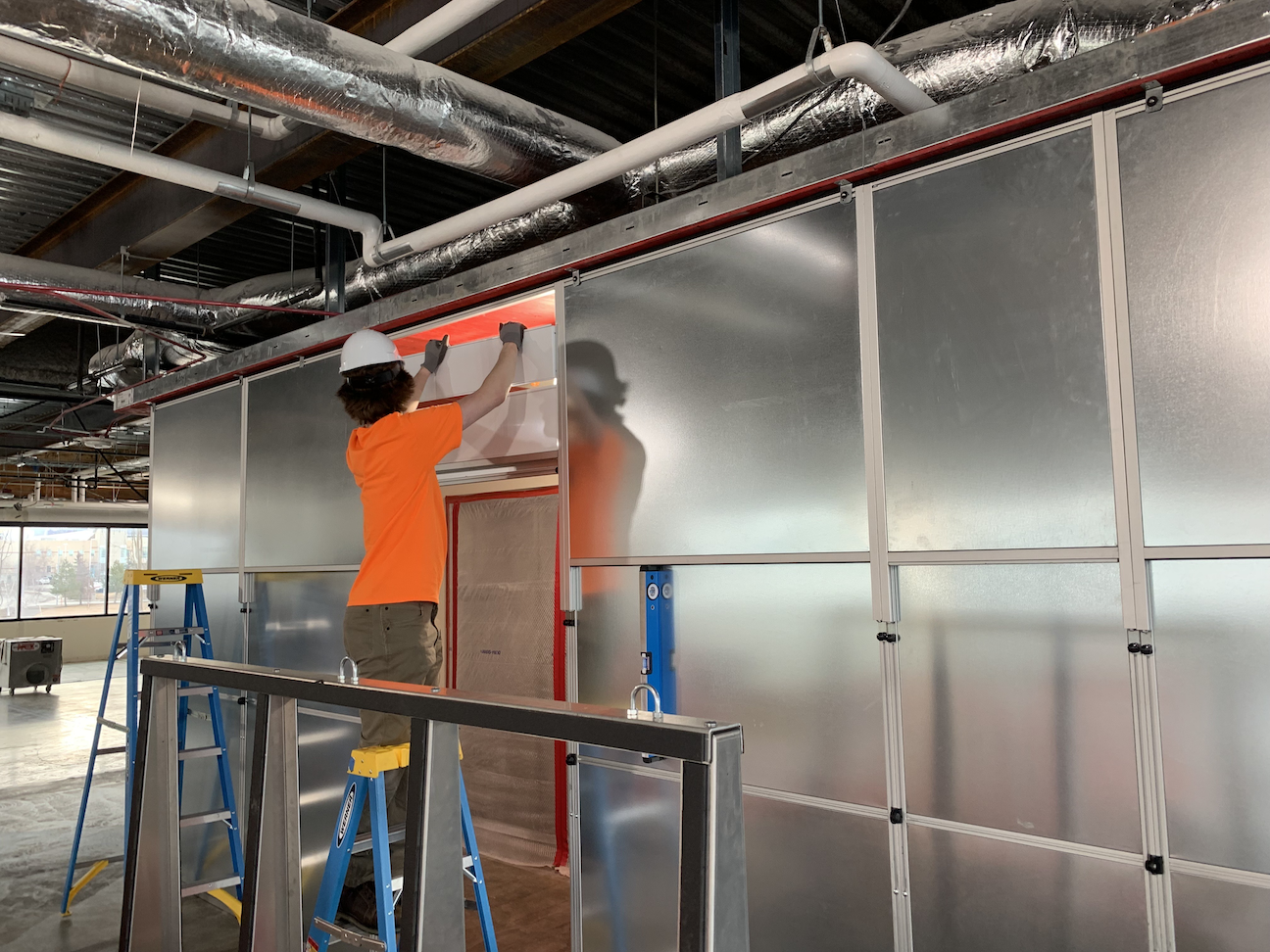Creating modular conference rooms using temporary walls is a cost-effective and quick solution to establish privacy in fast-paced work settings. Whether utilized for constructing cubicles, impromptu meeting spaces, partial walls to define open spaces, or during construction projects, their versatile and portable nature makes them the best choice among small businesses and office design professionals.
In this article, we’ll further review the innovative approach of creating modular conference rooms using temporary walls. We will explore their noise reduction capabilities and practical ways to help optimize your workspace efficiency.
Noise Reduction during a Renovation
The presence of noise in work environments creates stress, interrupts conversations, hampers concentration, and disrupts the conducive working atmosphere. Although modular conference rooms using temporary walls are not completely soundproof, they can dampen and reduce outside noise by up to 40%-70%, providing a more enjoyable and productive workspace.
A modular meeting room can also block common outside distractions, such as talking, phone rings, notification beeps, printers, and ventilation systems. The noise reduction feature of temporary walls in modular meeting rooms creates a secluded and focused environment, enhancing productivity, communication, and collaboration for teams in the office.
We also have a great article with an office renovations checklist for facilities managers.
Fine airborne particles from construction dust pose significant health hazards, leading to various cardiovascular and respiratory diseases, as well as cancer. Research indicates that construction dust constitutes the primary source of particulate emissions, contributing to 56.72% of total suspended particulates, 77.68% of PM10, and 76.77% of PM2.5.
If your team needs an onsite meeting space during an office renovation, we recommend planning ahead to layout a temporary conference room using temporary walls with an air filter. The air filter should have a minimum efficiency reporting value (MERV) of 5 to 8. This protects air-handling equipment from dust, insects, moisture, and microbial contamination during construction activities.
The Impact of Temporary Meeting Rooms for Any Business
Temporary meeting rooms utilizing temporary walls contribute significantly to the operations of any business. Because of their versatile and portable nature, temporary meeting rooms are highly convenient as they provide a conducive working environment to increase productivity and efficiency.
Temporary meeting rooms can be used effectively in various other business operations as well, such as:
- Conferences: Business success relies on effective communication, emphasizing the need for dedicated meeting spaces. Modular meeting rooms offer privacy, convenience, and comfort.
- Office Renovations: Temporary meeting rooms ensure continuous business operations during office renovations by minimizing disruptions and having a dedicated space away from noise.
- Large Events: Create temporary meeting spaces at exhibit conferences, trade shows, or other events.
- Fast-Growing Companies: When business grows fast, so does the workforce. Instead of moving or renovating, modular meeting rooms are the most convenient solution that provides flexible and adaptable spaces to accommodate the expanding team.
Tips for Creating the Best Modular Workspace
Businesses integrate modular workspaces into their establishments due to their convenience and customization. Temporary walls also benefit these businesses by reducing waste and conserving resources compared to permanently constructed walls. By carefully planning the workspace layout, you can create a productive work environment that enhances your team’s productivity and efficiency. Here are some tips for making the best modular workspace below:
- Optimize Space for Multi-functional Areas: Incorporate multi-purpose spaces in your modular workspace design. Instead of dedicating specific rooms to one function, design flexible spaces that adapt quickly to different needs.
- Set Up Communal Spaces: Design areas where employees can collaborate on projects. Setting up communal spaces encourages teamwork and cooperation among the team members.
- Invest in Break Rooms: Balancing focus and relaxation is vital to employee well-being. When planning your workspace layout, allocate some space for employees to unwind during challenging work periods.
- Avoid Noise Distractions: Temporary walls do just the job for noise cancellation. Prioritizing the reduction and dampening of outside noise boosts concentration and productivity for employees.
- Choose Smart Technology: Utilize smart workspace solutions that offer centralized management of lighting and HVAC systems. Investing in smart technology not only makes the workspace energy efficient but improves comfort for the team.
- Consult for Professional Help: If designing modular workspaces proves to be too difficult, consider hiring experts, especially those who focus on sustainable practices. Temporary Wall Systems is a full-service company that offers temporary wall rentals and installation to different industries. Contact us to learn more about our environmentally friendly temporary wall solutions for your business needs.



